Grazing in
the Burren:
resuscitating ancient traditions for participatory conservation
March, 2021
Years of tensions between farmers and policymakers in the Irish region of the Burren found relief when a researcher was brought in to study the impact of farming on local biodiversity. What he discovered paved the way for a locally targeted conservation initiative and eventually turned the Burren into an international example of successful citizen participation. The careful management of the region has earned it the European Diploma for Protected Areas granted by the Bern Convention.
Grazing in the Burren:
resuscitating ancient traditions for participatory conservation
March, 2021
Years of tensions between farmers and policymakers in the Irish region of the Burren found relief when a researcher was brought in to study the impact of farming on local biodiversity. What he discovered paved the way for a locally targeted conservation initiative and eventually turned the Burren into an international example of successful citizen participation. The careful management of the region has earned it the European Diploma for Protected Areas granted by the Bern Convention.
“Look, we need to do research down here. Because this just can’t continue.”
With these words farmer Michael Davoren paraphrases the sentiment amongst the farming community in the Burren in the late 1990s: an unrest that marked the beginning of something that was to reshape the future of the region completely.
“Look, we need to do research down here. Because this just can’t continue.”
With these words farmer Michael Davoren paraphrases the sentiment amongst the farming community in the Burren in the late 1990s: an unrest that marked the beginning of something that was to reshape the future of the region completely.
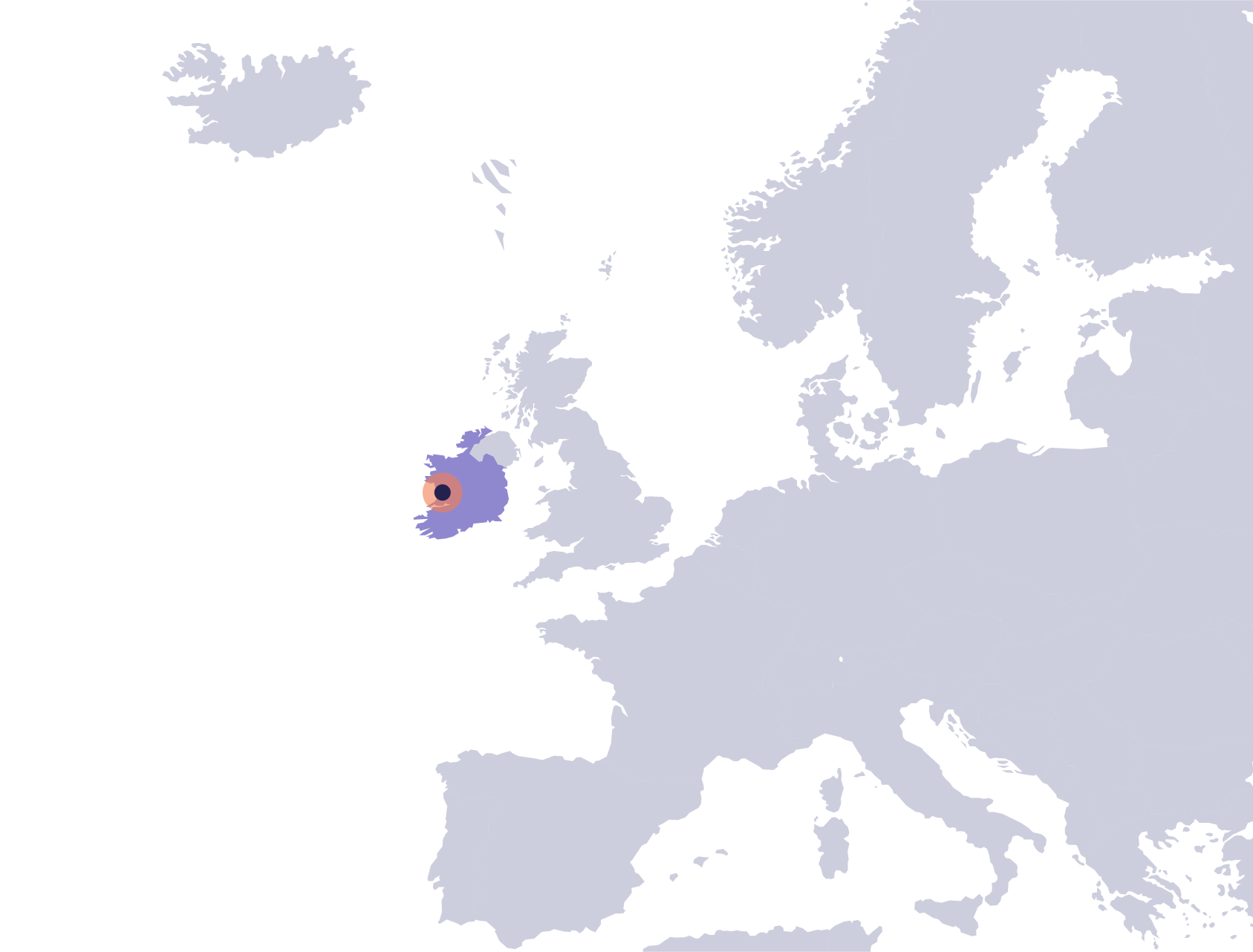
Burren, Ireland
The translation of the original Gaelic name of the region, Boireann, describes the region to a tee. This ‘place of stone’, covering more than 700 square kilometres in the West of Ireland, is dominated by a limestone landscape known as glacial karst. Karst is a visible relic of glaciation: the result of melting ice and water acting upon limestone, moulding it into spectacular formations.
The almost skeletal looks of the Burren can be misleading, as the area boasts an exceptional combination of flora and fauna. From between the rocks flourish species more commonly found in regions like the Alps or the Mediterranean, but also those more typical to the British Isles.
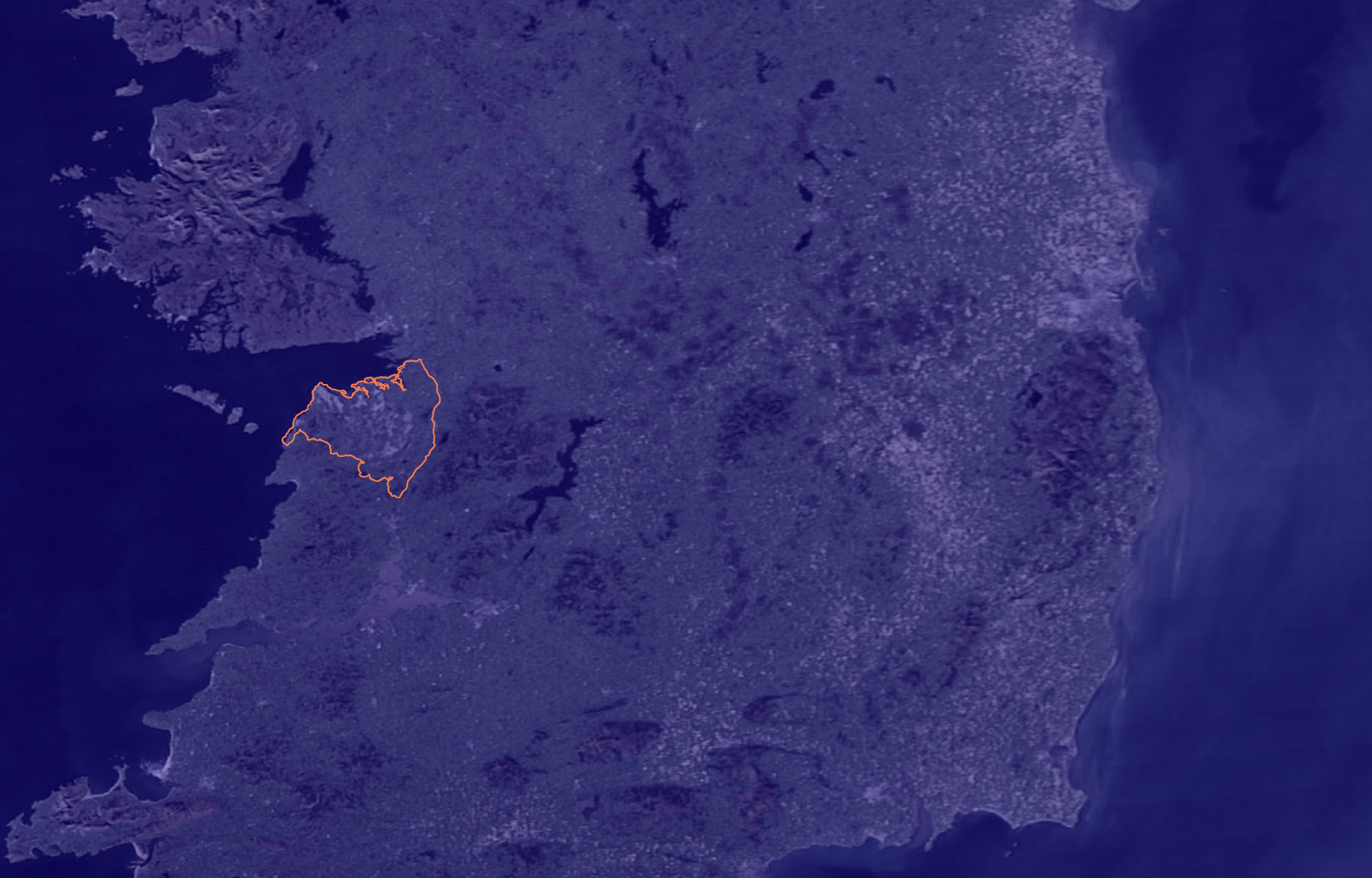

Burren, Ireland
Image by Jeff Schmaltz, MODIS Rapid Response Team, NASA/GSFC
The almost skeletal look of the Burren can be misleading, as the area boasts an exceptional combination of flora and fauna. From between the rocks flourish species more commonly found in regions like the Alps or the Mediterranean, but also those more typical to the British Isles and Ireland.
Burren Green
Calamia tridens
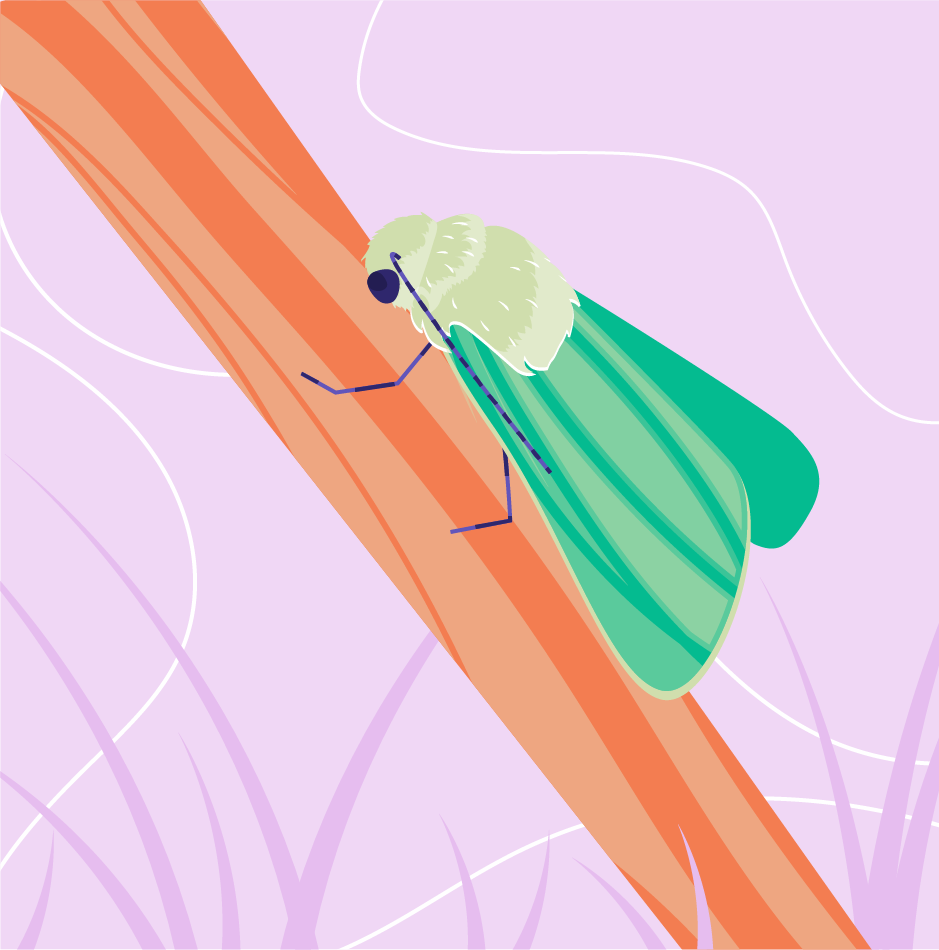
Spring Gentian
Gentiana verna
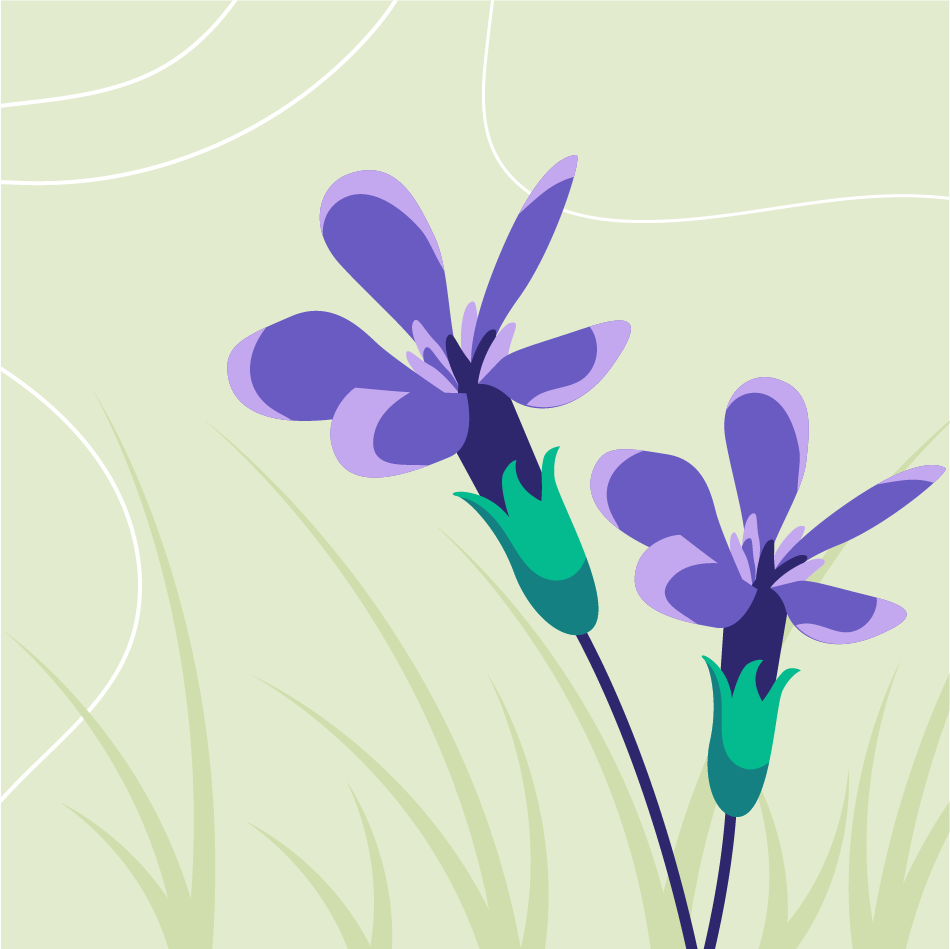
Slow worm
Anguis fragilis
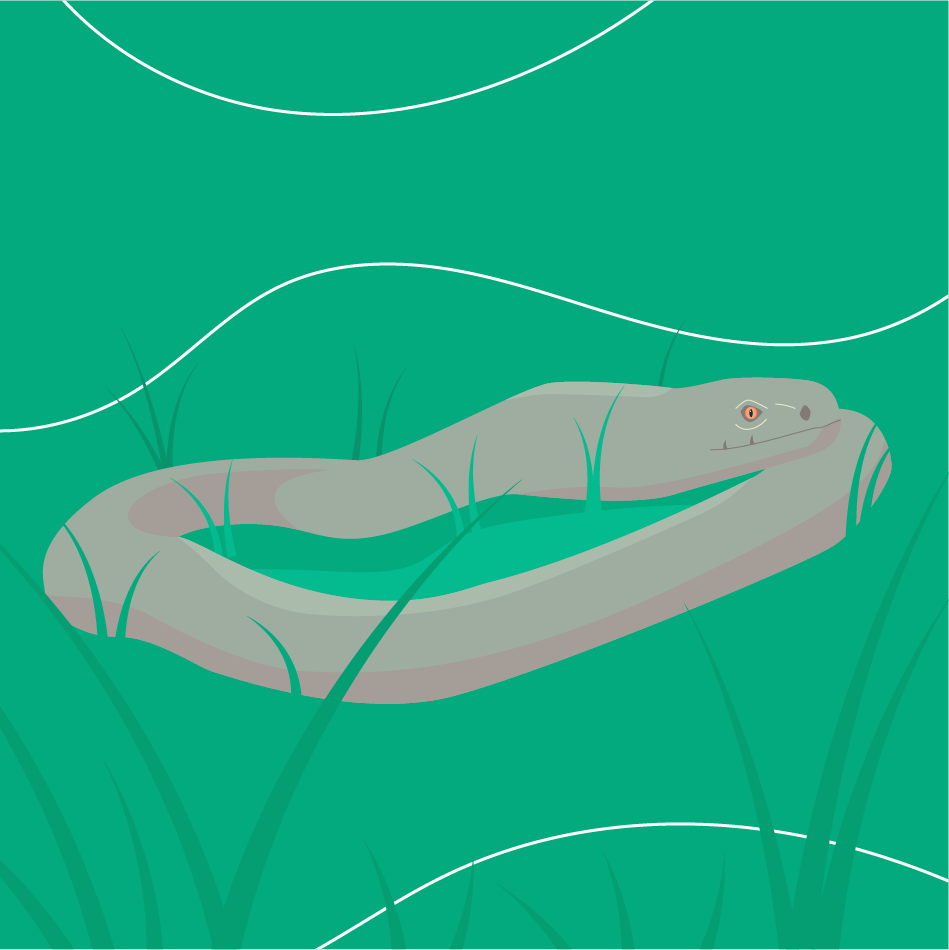
Hoary Rock-rose
Helianthemum oelandicum
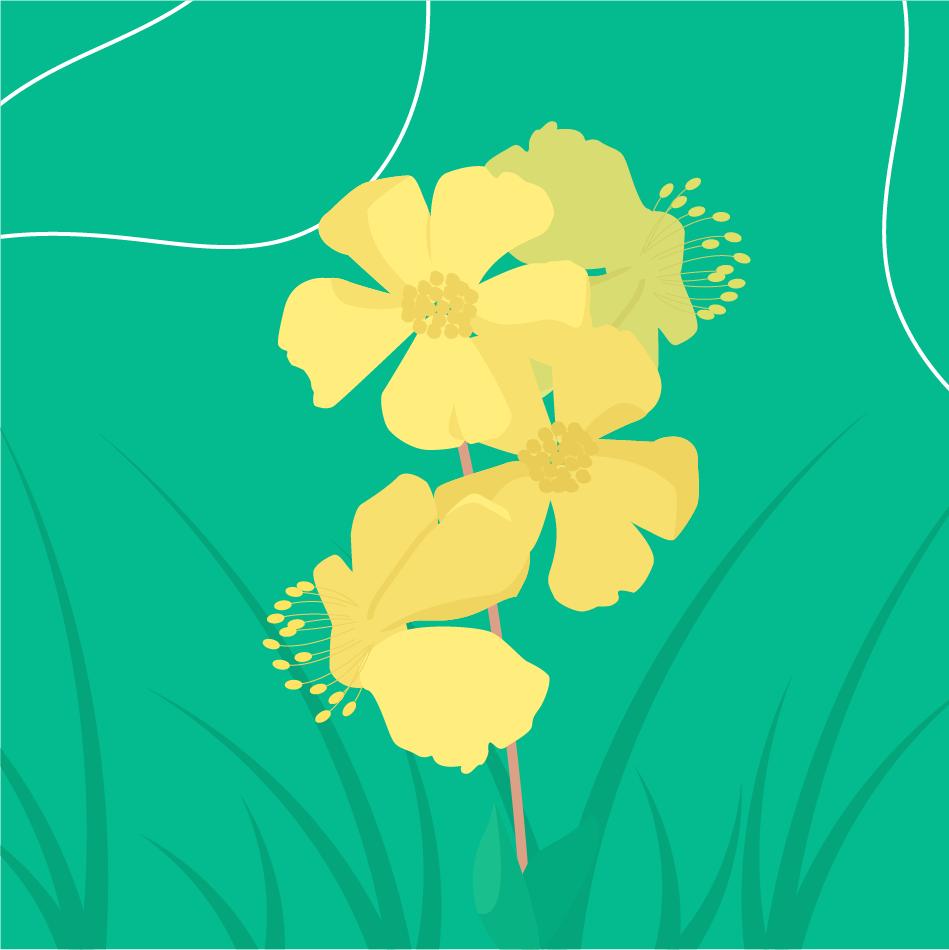
Pine Martin
Martes martes
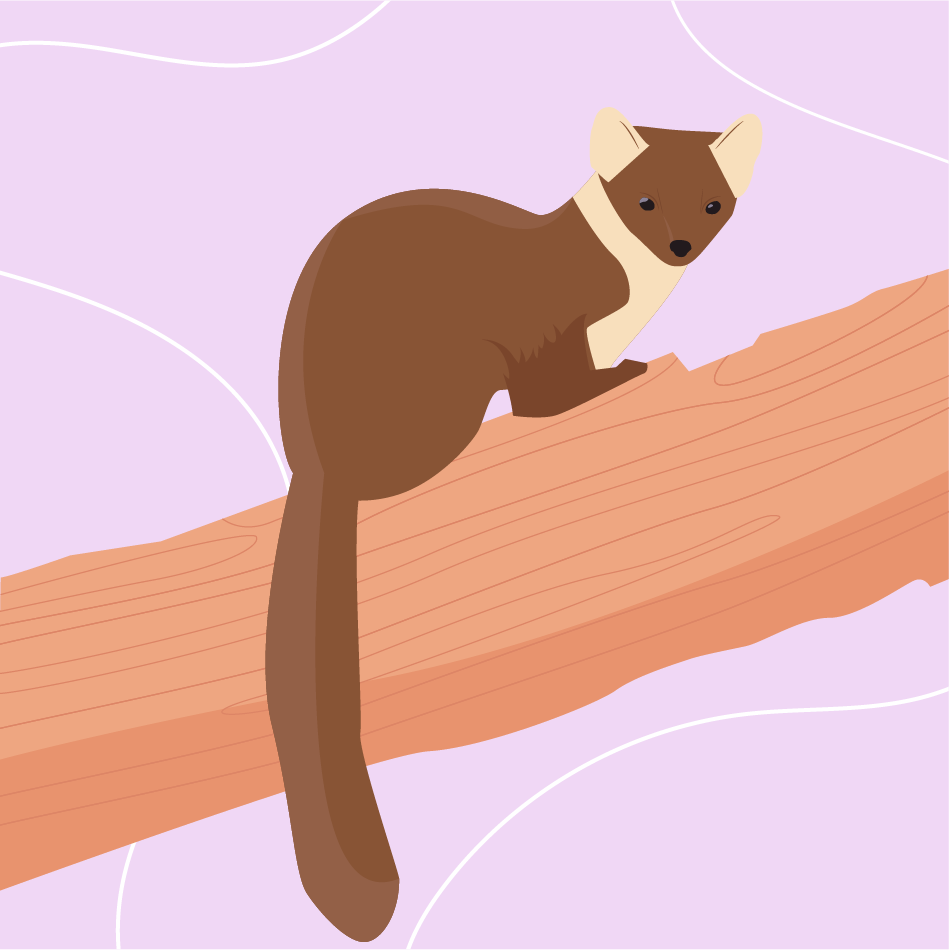
Bloody Crane’s-bill
Geranium sanguineum
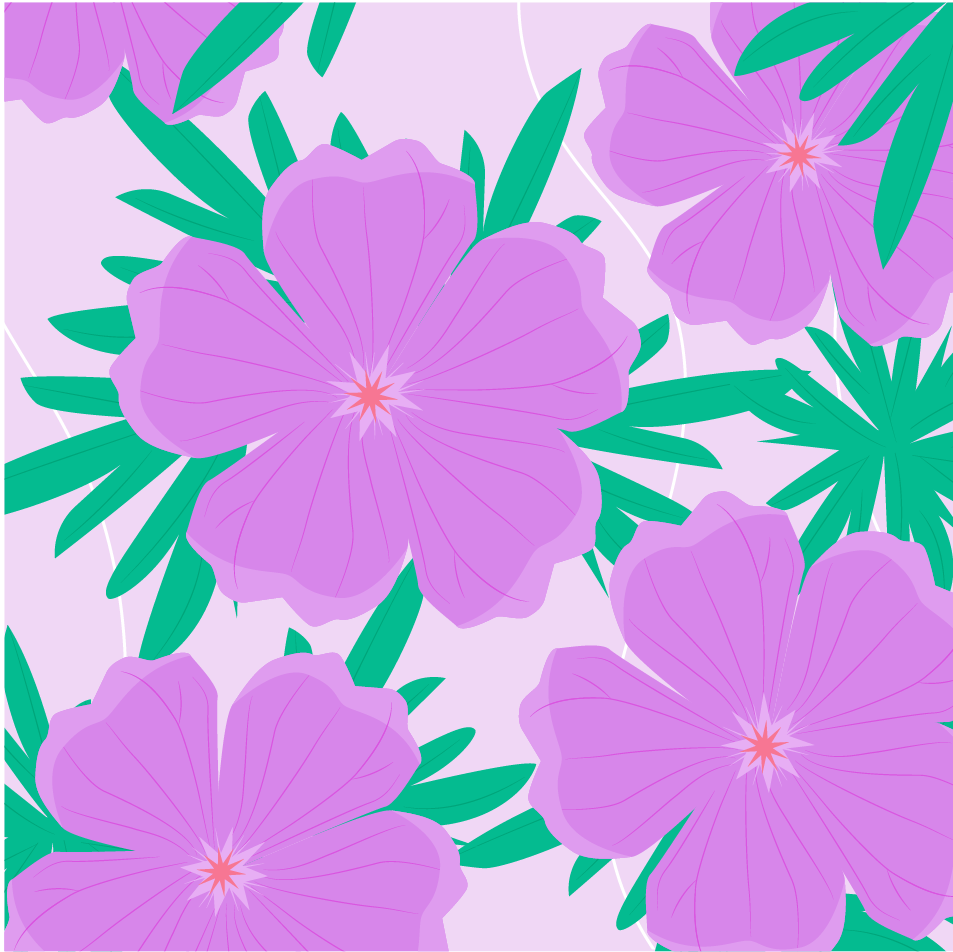
Also exceptional is the role of human activity, particularly farming, in the conservation of the natural and built landscape.
The ancient local transhumance tradition of winter grazing is still practiced in the region. The cattle are let out to pasture on the rough limestone grasslands and heaths during the winter months. As the animals feed on the dead vegetation, mainly dominant grass and weed species, they allow dormant flora beneath to receive enough light to thrive later in their flowering season.
Investigating connections between farming and biodiversity
Read the transcription
The 1990s were marked by growing restlessness in the farming community of the Burren. In the audio clip below, Burren farmer Michael Davoren explains why:
The EU had put in place a Directive to designate Special Areas of Conservation all over Europe, but the implementation of the order in the Burren, a region where farming traditions have strong connections to natural heritage, was difficult. Irish conservation authorities and farmers in the Burren had agreed upon the need to conduct research on the relationship between farming and biodiversity in the area. A PhD project was put on offer.
The challenge was accepted by a then twenty something year-old Brendan Dunford. Being from a farmer family himself and having just finished a Master’s degree in Environmental Resource Management, Dunford found the project extremely intriguing. Little did he know that he was about to embark on his life’s work.
Dunford’s PhD took place at a time when the agricultural sector had developed to favour efficiency, which meant that letting the cattle graze in the hills over the winter was no longer a good enough livelihood for farmers. In many cases it was much more efficient to farm intensively in the lowlands during the summer and to house the animals for the winter.
Dunford compared grassland habitats with different grazing regimes across the Burren and found that there was a greater diversity of species in areas where grazing happened primarily in the wintertime. In addition to revealing the importance of the tradition, Dunford looked for solutions together with local farmers to enhance winter grazing activities: developing new feeding and water systems as well as ways to address encroaching species.
“There’s a perception that farming can be very damaging if it’s done the wrong way. Using heavy machinery and chemicals can indeed be especially damaging. But, when it’s done properly, farming can lead to a lot in terms of biodiversity.”
The translation of the original Gaelic name of the region, Boireann, describes the region to a tee. This ‘place of stone’, covering more than 700 square kilometres in the West of Ireland, is dominated by a limestone landscape known as glacial karst. Karst is a visible relic of glaciation: the result of melting ice and water acting upon limestone, moulding it into spectacular formations.
The almost skeletal look of the Burren can be misleading, as the area boasts an exceptional combination of flora and fauna. From between the rocks flourish species more commonly found in regions like the Alps or the Mediterranean, but also those more typical to the British Isles and Ireland.
Burren Green
Calamia tridens

Spring Gentian
Gentiana verna

Slow worm
Anguis fragilis

Hoary Rock-rose
Helianthemum oelandicum

Pine Martin
Martes martes

Bloody Crane’s-bill
Geranium sanguineum

Also exceptional is the role of human activity, particularly farming, in the conservation of the natural and built landscape.
The ancient local transhumance tradition of winter grazing is still practiced in the region. The cattle are let out to pasture on the rough limestone grasslands and heaths during the winter months. As the animals feed on the dead vegetation, mainly dominant grass and weed species, they allow dormant flora beneath to receive enough light to thrive later in their flowering season.
Investigating connections between farming and biodiversity
The 1990s were marked by growing restlessness in the farming community of the Burren. In the audio clip beside, Burren farmer Michael Davoren explains why and tells about his experiences.
The EU had put in place a Directive to designate Special Areas of Conservation all over Europe, but the implementation of the order in the Burren, a region where farming traditions have strong connections to natural heritage, was difficult. Irish conservation authorities and farmers in the Burren had agreed upon the need to conduct research on the relationship between farming and biodiversity in the area. A PhD project was put on offer.
The challenge was accepted by a then twenty something year-old Brendan Dunford. Being from a farmer family himself and having just finished a Master’s degree in Environmental Resource Management, Dunford found the project extremely intriguing. Little did he know that he was about to embark on his life’s work.
Dunford’s PhD took place at a time when the agricultural sector had developed to favour efficiency, which meant that letting the cattle graze in the hills over the winter was no longer a good enough livelihood for farmers. In many cases it was much more efficient to farm intensively in the lowlands during the summer and to house the animals for the winter.
Dunford compared grassland habitats with different grazing regimes across the Burren and found that there was a greater diversity of species in areas where grazing happened primarily in the wintertime. In addition to revealing the importance of the tradition, Dunford looked for solutions together with local farmers to enhance winter grazing activities: developing new feeding and water systems as well as ways to address encroaching species.
“There’s a perception that farming can be very damaging if it’s done the wrong way. Using heavy machinery and chemicals can indeed be especially damaging. But, when it’s done properly, farming can lead to a lot in terms of biodiversity.”
Read the transcription
“It was important for the farmers to be appreciated, for them to be able to say ‘Look, while some people say farmers are part of the problem, we feel that we’re part of the solution’.”
Dunford’s research not only resulted in a PhD thesis but also in a book called Farming and the Burren, published in 2002. The book was a sign for the farmers that they were respected and their livelihood and presence was truly needed in the region.
“It was important for the farmers to be appreciated, for them to be able to say ‘Look, while some people say farmers are part of the problem, we feel that we’re part of the solution’. And I think it was very empowering that their story had been listened to and they were recognised as being important to the future of the Burren,” Dunford says.
“It was important for the farmers to be appreciated, for them to be able to say ‘Look, while some people say farmers are part of the problem, we feel that we’re part of the solution’.”
Dunford’s research not only resulted in a PhD thesis but also in a book called Farming and the Burren, published in 2002. The book was a sign for the farmers that they were respected and their livelihood and presence was truly needed in the region.
“It was important for the farmers to be appreciated, for them to be able to say ‘‘Look, while some people say farmers are part of the problem, we feel that we’re part of the solution’. And I think it was very empowering that their story had been listened to and they were recognised as being important to the future of the Burren,” Dunford says.

Brendan Dunford
A bottom-up approach to conservation
The work Dunford started for his PhD continued in an EU funded LIFE project between 2005 and 2010, with an aim of addressing some of the issues identified in his previous studies. The BurrenLIFE project, preceding the current Burren Programme, focused on creating a blueprint for sustainable farming in the Burren together with local farmers.
A bottom-up approach to conservation
The work Dunford started for his PhD continued in an EU funded LIFE project between 2005 and 2010, with an aim of addressing some of the issues identified in his previous studies. The BurrenLIFE project, preceding the current Burren Programme, focused on creating a blueprint for sustainable farming in the Burren together with local farmers.
“We worked with farmers to find solutions for how to manage the land in a way that respects the environment, but also continues to deliver good food. Most of the ideas that came from farmers were tested on farmland and the results went back to the farmer,” Brendan Dunford says.
Dunford and his team managed to bring farmers together with the national conservation authority National Parks and Wildlife Service (NPWS) as well as the Irish Agriculture and Food Development Authority Teagasc to solve a common challenge in the BurrenLIFE project.
“Having scientific proof of the importance of farming to the conservation of the Burren in a certain way got the authorities on board. We could show them that farmers and their livestock are needed to sustain the high levels of biodiversity in the area,” Dunford says.
“It was a very positive exercise and brought people closer together. Most importantly, it gave us concrete information as to how we farm for nature in the Burren.”
The BurrenLIFE project was exceptional in many ways. It was the first project in Ireland to focus on farming for conservation and one of the few EU projects embracing a bottom-up, farmer-centric approach to conservation.
“We worked with farmers to find solutions for how to manage the land in a way that respects the environment, but also continues to deliver good food. Most of the ideas that came from farmers were tested on farmland and the results went back to the farmer,” Brendan Dunford says.
Dunford and his team managed to bring farmers together with the national conservation authority National Parks and Wildlife Service (NPWS) as well as the Irish Agriculture and Food Development Authority Teagasc to solve a common challenge in the BurrenLIFE project.
“Having scientific proof of the importance of farming to the conservation of the Burren in a certain way got the authorities on board. We could show them that farmers and their livestock are needed to sustain the high levels of biodiversity in the area,” Dunford says.
“It was a very positive exercise and brought people closer together. Most importantly, it gave us concrete information as to how we farm for nature in the Burren.”
The BurrenLIFE project was exceptional in many ways. It was the first project in Ireland to focus on farming for conservation and one of the few EU projects embracing a bottom-up, farmer-centric approach to conservation.
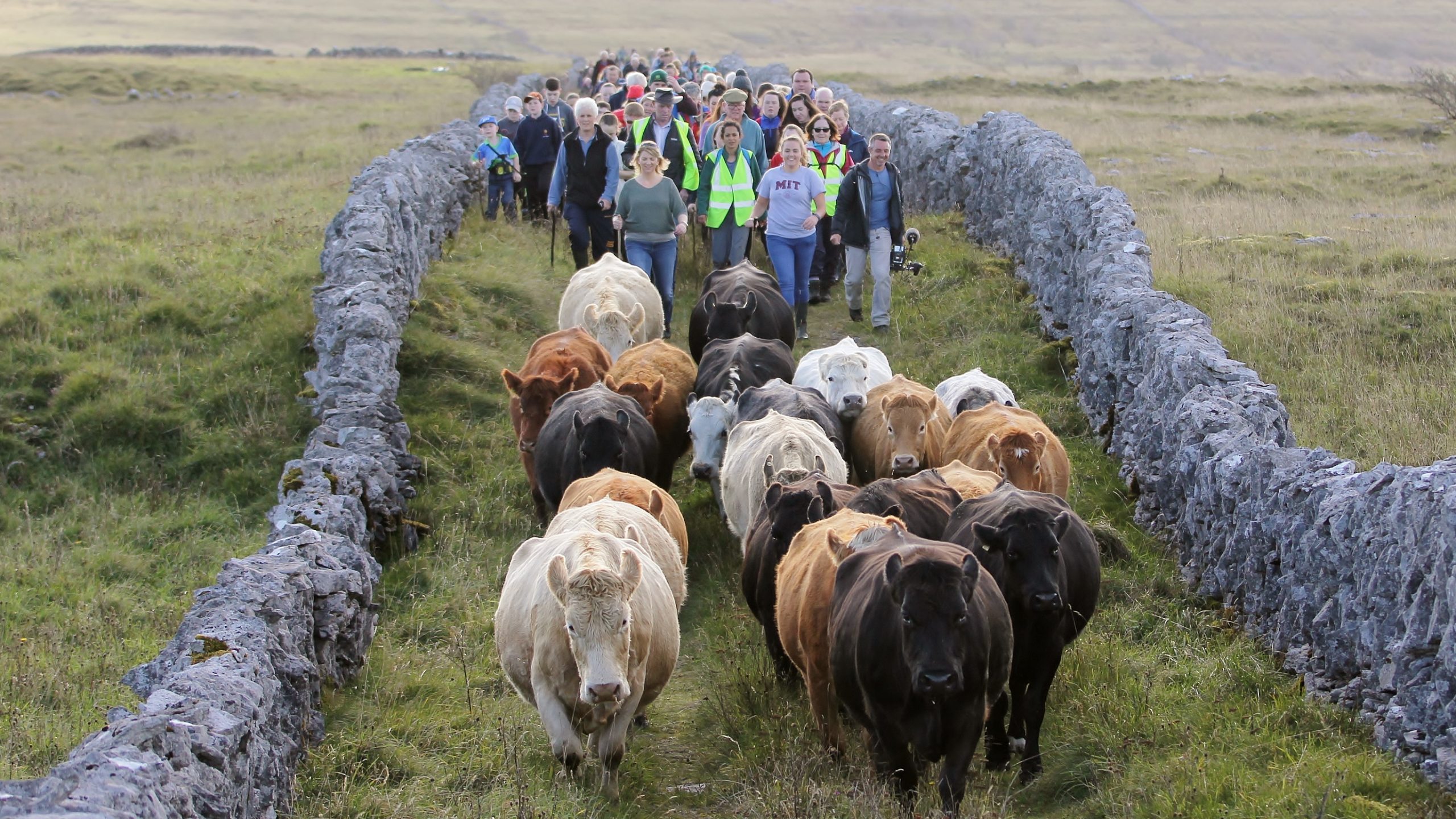
Freedom to farm
Before Dunford began his work in the Burren, initiatives for nature conservation had been poorly received amongst local farmers. Dunford believes this was partly due to the fact that the farmers felt that their practical knowledge of their land and experience in managing it was being ignored and they were no longer trusted — that others knew better than them.
Freedom to farm
Before Dunford began his work in the Burren, initiatives for nature conservation had been poorly received amongst local farmers. Dunford believes this was partly due to the fact that the farmers felt that their practical knowledge of their land and experience in managing it was being ignored and they were no longer trusted — that others knew better than them.
“If you get a letter saying your land is now protected and these are all the things you can no longer do, it can feel as if your much-cherished freedom to farm is taken away with no consultation.”
The BurrenLIFE project gave way to a new initiative, The Burren Farming for Conservation Programme, with a goal to implement the blueprint created together with farmers. The initiative started in 2010 and was consolidated as the Burren Programme in 2016, with Brendan Dunford as its Project Manager.
The Burren Programme builds on the lessons of the three previous phases, putting farmers at the centre of its activities. Its starting point was to ensure that farmers were part of the planning and design, not passive implementers of whichever practices were considered best for the region.
Recognition from
The European Diploma for Protected Areas is a prestigious international award granted since 1965 by the Committee of Ministers of the Council of Europe. It recognises natural and semi-natural areas and landscapes of exceptional European importance for the preservation of biological, geological and landscape diversity and which are managed in an exemplary way.
In 2013, the Burren Region became the 72nd area to receive the European Diploma for Protected Areas. Much of the Burren region has been designated as part of the Natura 2000 network, while the region has also been awarded Geopark Status. But the Burren is a living landscape, and the hundreds of farm families who own and farm the Burren are the basis of its future conservation.
“If you get a letter saying your land is now protected and these are all the things you can no longer do, it can feel as if your farm is taken away with no consultation.”
However, although many solutions had been created to improve farming conditions in the region, Dunford and his team noticed that there were still farms where management practices didn’t change. When asked for the reason, the farmers confessed that there wasn’t enough incentive for them to let their cattle graze on the hills during wintertime.
“It was much easier for the farmer to build a house for the animals and keep them inside for the winter.”
To address this lack of interest, the Burren Programme embraced a result-based approach. The fields of the participating farms are annually assessed using ten criteria, such as level of grazing, amount of dead plant material, condition of natural water sources and condition of feeding sites. The better the score, and thus the environmental health of the land, the more ‘pay for performance’ public funding the farmer gets. Participation in the programme is voluntary.
“We allow the farmers total freedom to farm. We give them advice and support and help them in every way we can, but it’s entirely up to them as to how to manage the land and they are rewarded accordingly,” Dunford explains.
In addition to getting paid for the results, farmers can request funding from the Programme to improve the environmental infrastructure on their lands. Matched funding is available to improve water provision, repair walls, improve access to sites and remove encroaching species, for example.
The fruits of the decades-long development of the Burren Programme are being reaped by older and newer generations of farmers alike. Listen to 24-year-old Burren farmer Aoife Forde’s experiences:
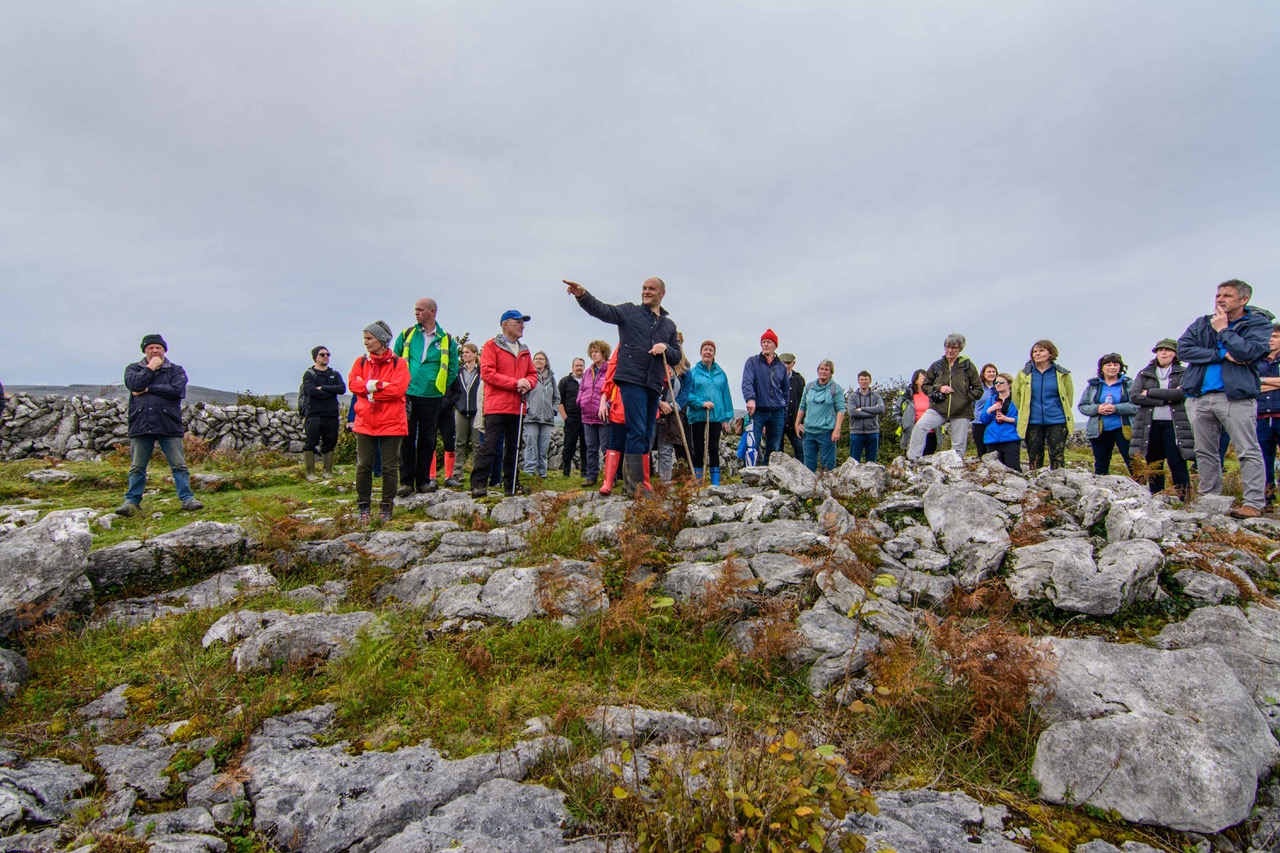
“If you get a letter saying your land is now protected and these are all the things you can no longer do, it can feel as if your much-cherished freedom to farm is taken away with no consultation.”
The BurrenLIFE project gave way to a new initiative, The Burren Farming for Conservation Programme, with a goal to implement the blueprint created together with farmers. The initiative started in 2010 and was consolidated as the Burren Programme in 2016, with Brendan Dunford as its Project Manager.
The Burren Programme builds on the lessons of the three previous phases, putting farmers at the centre of its activities. Its starting point was to ensure that farmers were part of the planning and design, not passive implementers of whichever practices were considered best for the region.
“If you get a letter saying your land is now protected and these are all the things you can no longer do, it can feel as if your farm is taken away with no consultation.”
Recognition from

The European Diploma for Protected Areas is a prestigious international award granted since 1965 by the Committee of Ministers of the Council of Europe. It recognises natural and semi-natural areas and landscapes of exceptional European importance for the preservation of biological, geological and landscape diversity and which are managed in an exemplary way.
In 2013, the Burren Region became the 72nd area to receive the European Diploma for Protected Areas. Much of the Burren region has been designated as part of the Natura 2000 network, while the region has also been awarded Geopark Status. But the Burren is a living landscape, and the hundreds of farm families who own and farm the Burren are the basis of its future conservation.
However, although many solutions had been created to improve farming conditions in the region, Dunford and his team noticed that there were still farms where management practices didn’t change. When asked for the reason, the farmers confessed that there wasn’t enough incentive for them to let their cattle graze on the hills during wintertime.
“It was much easier for the farmer to build a house for the animals and keep them inside for the winter.”
To address this lack of interest, the Burren Programme embraced a result-based approach. The fields of the participating farms are annually assessed using ten criteria, such as level of grazing, amount of dead plant material, condition of natural water sources and condition of feeding sites. The better the score, and thus the environmental health of the land, the more ‘pay for performance’ public funding the farmer gets. Participation in the programme is voluntary.
“We allow the farmers total freedom to farm. We give them advice and support and help them in every way we can, but it’s entirely up to them as to how to manage the land and they are rewarded accordingly,” Dunford explains.
In addition to getting paid for the results, farmers can request funding from the Programme to improve the environmental infrastructure on their lands. Matched funding is available to improve water provision, repair walls, improve access to sites and remove encroaching species, for example.
The fruits of the decades-long development of the Burren Programme are being reaped by older and newer generations of farmers alike. Listen to 24-year-old Burren farmer Aoife Forde’s experiences:
Local support receives praise from farmers
The Burren Programme is publicly funded by the Department of Agriculture, Food and the Marine as well as The National Parks and Wildlife Service (NPWS) of the Department of Culture, Heritage and the Gaeltacht in Ireland. As there are ten years’ worth of data accumulated, the Programme can easily show to the funders how the environmental condition of the region has improved.
Local support receives praise from farmers
The Burren Programme is publicly funded by the Department of Agriculture, Food and the Marine as well as The National Parks and Wildlife Service (NPWS) of the Department of Culture, Heritage and the Gaeltacht in Ireland. As there are ten years’ worth of data accumulated, the Programme can easily show to the funders how the environmental condition of the region has improved.
“Since we began, the fields’ score has improved slightly year on year. Unless the farmer scores five or more, they don’t get paid. Taxpayers save a lot of money because they don’t pay for bad quality management. It’s good value for money,” Dunford explains.
“We allow the farmer total freedom to farm. We give them advice and support and help them in every way we can, but it’s entirely up to them as to how to manage the land.”
However, the payments aren’t what the farmers most seem to appreciate in the programme. A recent study revealed that it was locality that was the most important reason for many to join the Programme. The Burren Programme holds a local office of six people who offer support to the farmers. They also take care of all of the paperwork if farmers want to take actions on their lands that require the approval of local or international authorities.
“Farmers know where to come to if they have a problem, if the payments are delayed or if they need advice. They can just knock on our door,” Dunford says.
The concerns voiced some thirty years ago by local farmers didn’t go unnoticed — instead, they sparked a chain reaction which has guaranteed the future of the Burren’s varied lives and livelihoods. It took a committed researcher and willingness from both local and national institutions to resuscitate the ancient traditions of this ‘place of stone’. Today, it’s a global example of participatory conservation.
“Since we began, the fields’ score has improved slightly year on year. Unless the farmer scores five or more, they don’t get paid. Taxpayers save a lot of money because they don’t pay for bad quality management. It’s good value for money,” Dunford explains.
“We allow the farmer total freedom to farm. We give them advice and support and help them in every way we can, but it’s entirely up to them as to how to manage the land.”
However, the payments aren’t what the farmers most seem to appreciate in the programme. A recent study revealed that it was locality that was the most important reason for many to join the Programme. The Burren Programme holds a local office of six people who offer support to the farmers. They also take care of all of the paperwork if farmers want to take actions on their lands that require the approval of local or international authorities.
“Farmers know where to come to if they have a problem, if the payments are delayed or if they need advice. They can just knock on our door,” Dunford says.
The concerns voiced some thirty years ago by local farmers didn’t go unnoticed — instead, they sparked a chain reaction which has guaranteed the future of the Burren’s varied lives and livelihoods. It took a committed researcher and willingness from both local and national institutions to resuscitate the ancient traditions of this ‘place of stone’. Today, it’s a global example of participatory conservation.
The evolution of the Burren Programme
Late 1990s-beginning of the 2000s
SITUATION ANALYSIS
-
PhD project: The Impact of Agricultural Practices on the Natural Heritage of the Burren
-
Book: Farming and the Burren
2005-2010
CO-CREATION OF SOLUTIONS
-
The BurrenLife Project
2010-2015
IMPLEMENTING SOLUTIONS
-
The Burren Farming for Conservation Programme
2016-
CONTINUING THE IMPLEMENTATION
-
The Burren Programme
The Burren Programme in numbers
328 farms involved
Covers approx. 1,800 fields and 23,000 hectares of land
Covers approx. 70% of protected areas in the Burren
Funding: 1.5 million €/year approx.
Average payment for action to farmer: 3,400€/year
Average payment for result to farmer: 3,600€/year
The evolution of the Burren Programme
Late 1990s-beginning of the 2000s
SITUATION ANALYSIS
-
PhD project: The Impact of Agricultural Practices on the Natural Heritage of the Burren
-
Book: Farming and the Burren
2005-2010
CO-CREATION OF SOLUTIONS
-
The BurrenLife Project
2010-2015
IMPLEMENTING SOLUTIONS
-
The Burren Farming for Conservation Programme
2016-
CONTINUING THE IMPLEMENTATION
-
The Burren Programme